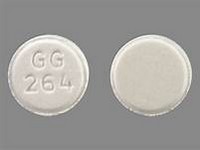Atenolol

Atenolol
CLINICAL USE
Beta-adrenoceptor blocker:Hypertension, angina, arrhythmias DOSE IN NORMAL RENAL FUNCTION
Oral: Hypertension: 25–50 mg daily Angina: 100 mg daily in 1 or 2 divided dosesArrhythmias: 50–100 mg daily IV:Arrhythmias: 2.5 mg at a rate of 1 mg/ min repeated at 5 minute intervals to a maximum of 10 mgInfusion:150 mcg/kg, repeated every 12 hours if required PHARMACOKINETICS
Molecular weight :266.3 %Protein binding :3 %Excreted unchanged in urine : >90 Volume of distribution (L/kg) :1.1half-life – normal/ESRD (hrs) :6–7/15–35 DOSE IN RENAL IMPAIRMENT
GFR (mL/MIN)
20 to 50 : Dose as in normal renal function 10 to 20 : Dose as in normal renal function <10 : Dose as in normal renal function DOSE IN PATIENTS UNDERGOING RENAL REPLACEMENT THERAPIES
CAPD :Not dialysed. Dose as in normal renal function HD :Dialysed. Dose as in normal renal functionHDF/high flux :Dialysed. Dose as in normal renal functionCAV/VVHD :Dialysed. Dose as in normal renal function IMPORTANT DRUG INTERACTIONS
Potentially hazardous interactions with other drugsAnaesthetics: enhanced hypotensive effect Analgesics: NSAIDs antagonise hypotensive effectAnti-arrhythmics: increased risk of myocardial depression and bradycardia; increased risk of bradycardia, myocardial depression and AV block with amiodaroneAntidepressants: enhanced hypotensive effect with MAOIsAntihypertensives: enhanced hypotensive effect; increased risk of withdrawal hypertension with clonidine; increased risk of first dose hypotensive effect with post-synaptic alpha-blockers such as prazosinAntimalarials: increased risk of bradycardia with mefloquineAntipsychotics enhanced hypotensive effect with phenothiazinesCalcium-channel blockers: increased risk of bradycardia and AV block with diltiazem; hypotension and heart failure possible with nifedipine and nisoldipine; asystole, severe hypotension and heart failure with verapamilDiuretics: enhanced hypotensive effect Moxisylyte: possible severe postural hypotensionSympathomimetics: severe hypertension with adrenaline and noradrenaline and possibly with dobutamineTropisetron: increased risk of ventricular arrhythmias – use with caution ADMINISTRATION
Reconstition
– Route
Oral, IV Rate of Administration
Infusion: 20 minutes IV injection: 1 mg/minute Comments
Dilute with glucose 5% or sodium chloride 0.9% OTHER INFORMATION
CSM advise that beta-blockers are contraindicated in patients with asthma or history of obstructive airway disease
See how to identify renal failure stages according to GFR calculation
See how to diagnose irreversible renal disease
Home









